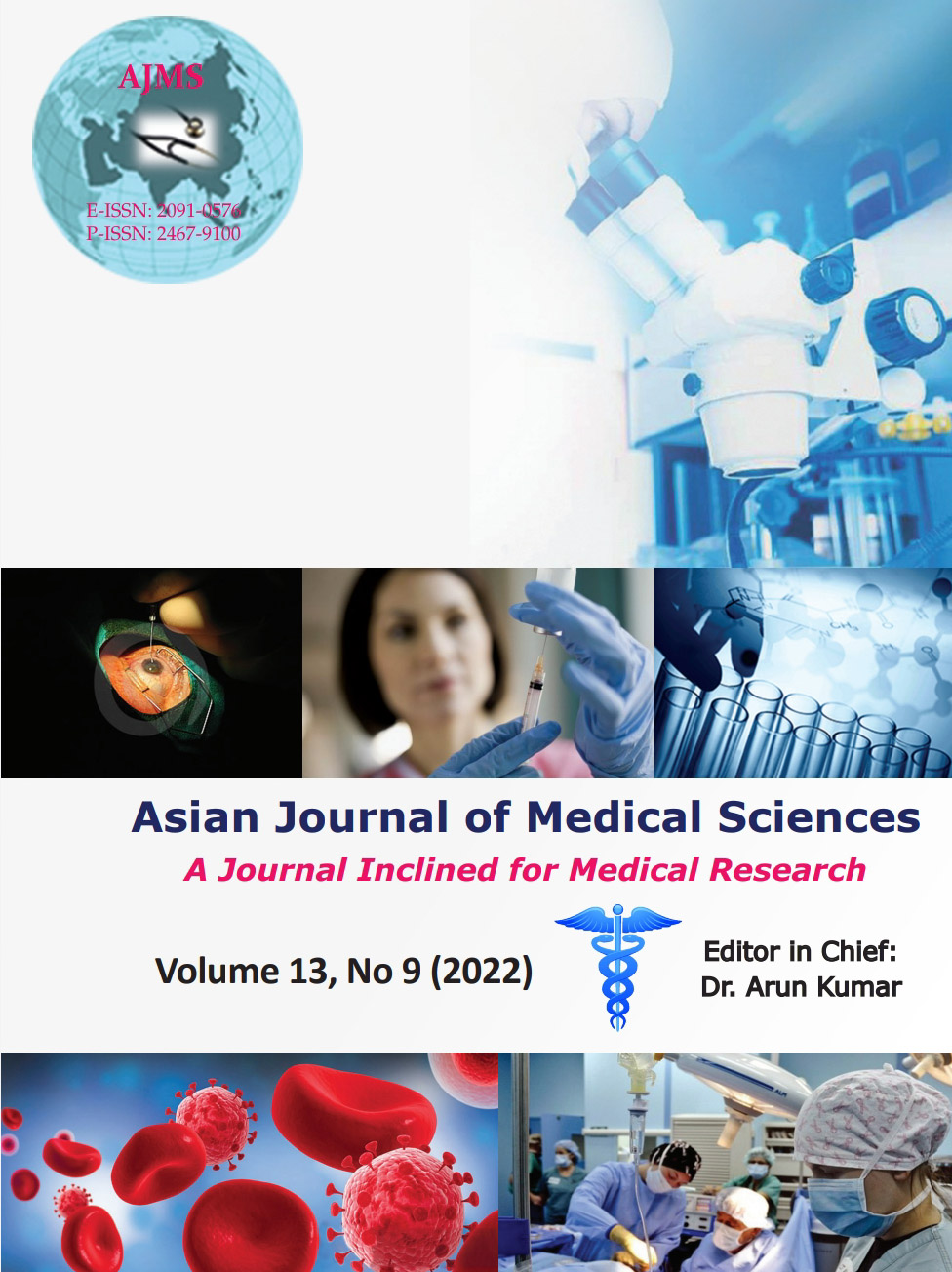An unattended silent killer: A facility-based cross-sectional study on undiagnosed hypertension from Haryana, India
Keywords:
Hypertension; Undiagnosed hypertension; AdultsAbstract
Background: Non-communicable diseases are on the upsurge throughout the world. They take a toll of 71% of overall total death, majorly contributed by cardiovascular disease. Hypertension has been a consistent risk factor for cardiovascular diseases among the various risk factors. Hypertension’s asymptomatic nature makes it a silent killer; many lives are avertable if a timely diagnosis can be assured.
Aims and Objectives: The aim of this study was to determine the prevalence of undiagnosed hypertension among the attendees of a sub-district hospital.
Materials and Methods: We conveniently chose 100 participants of age 30 years from the out-patient department of a sub-district hospital in Gohana, Haryana. Any attendees aged more than 30 years was requested to participate in the study. The execution of the study was done in accordance to the guidelines laid in Helsinki Declaration 1975, revised 1983. Due permission was taken from the concerned authority of the study facility. After obtaining well-informed consent, data were collected through a semi-structured questionnaire. The blood pressure was measured and classified per JNC-8 guidelines. Any participant having systolic B.P. more than 140 mmHg and diastolic B.P. more than 90 mmHg on two 5 min apart readings was considered hypertensive. The descriptive analysis was done in terms of frequencies and proportions. The Chi-square test was done to determine any association of undiagnosed hypertension with selected risk factors.
Results: We report a 59% prevalence of undiagnosed hypertension among study participants. The undiagnosed hypertension was statistically associated (P<0.05) with higher body mass index, less physically active, being a diabetic, alcoholic, smoker, and having a positive family history of hypertension. Only 2% of the participants knew of any health program on non-communicable diseases.
Conclusion: A higher prevalence of undiagnosed hypertension even after health facility visits for any other reason warrants the standardized and universal blood pressure measurement of patients visiting health facilities irrespective of the health issue, for which they are visiting.
Downloads
Downloads
Published
How to Cite
Issue
Section
License
Copyright (c) 2022 Asian Journal of Medical Sciences

This work is licensed under a Creative Commons Attribution-NonCommercial 4.0 International License.
Authors who publish with this journal agree to the following terms:
- The journal holds copyright and publishes the work under a Creative Commons CC-BY-NC license that permits use, distribution and reprduction in any medium, provided the original work is properly cited and is not used for commercial purposes. The journal should be recognised as the original publisher of this work.
- Authors are able to enter into separate, additional contractual arrangements for the non-exclusive distribution of the journal's published version of the work (e.g., post it to an institutional repository or publish it in a book), with an acknowledgement of its initial publication in this journal.
- Authors are permitted and encouraged to post their work online (e.g., in institutional repositories or on their website) prior to and during the submission process, as it can lead to productive exchanges, as well as earlier and greater citation of published work (See The Effect of Open Access).




